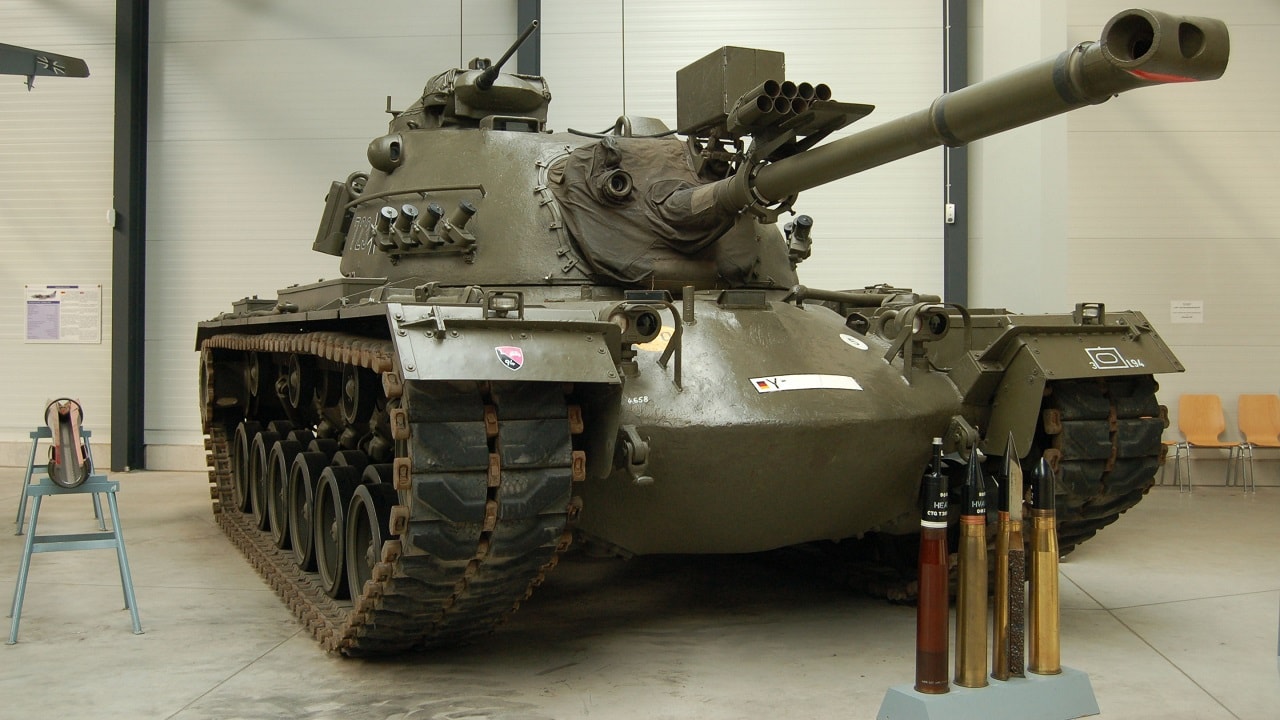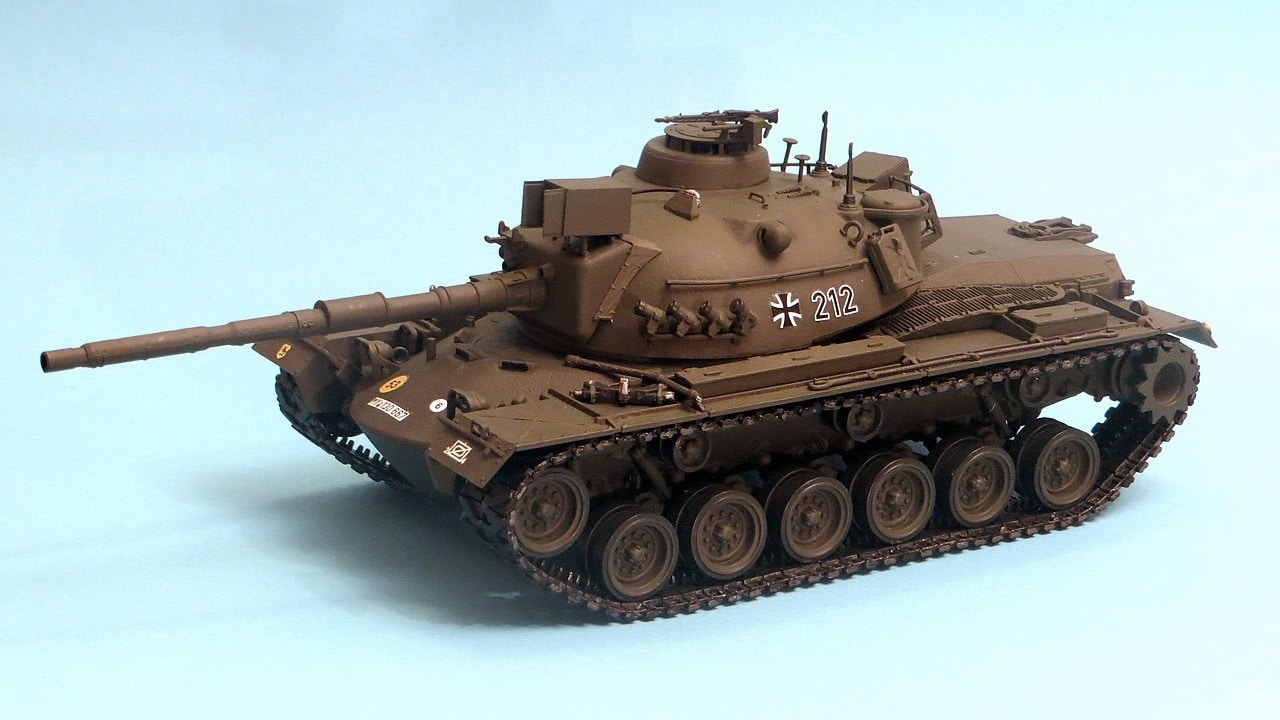Article Summary: The M48 Patton was the backbone of U.S. armored forces during the Cold War and Vietnam War, playing a pivotal role in modern tank warfare. It had one mission: beat the Soviet Union in combat or its proxy forces.
Key Point #1 – Developed in the early 1950s, the Patton featured powerful 90mm and later 105mm cannons, advanced armor, and a diesel engine for improved battlefield endurance. Used by nations worldwide, the M48 saw action in multiple conflicts, from the Six-Day War to the Indo-Pakistani Wars.
Key Point #2 – Though replaced by the M60, its design influenced future tanks and continues to serve in some countries. The M48’s legacy remains a cornerstone of military history, shaping armored warfare for decades.
M48 Patton: The Tank That Defined Cold War Combat
The M48 Patton, named after the famed World War II General George S. Patton, is a first-generation American main battle tank (MBT) that has left its mark on military history.
Introduced in February 1952, the M48 was designed to replace the aging M26 Pershing, M4 Sherman, M46, and M47 Patton tanks.
It became the backbone of the U.S. Army and Marine Corps during the Vietnam War and saw extensive service in numerous conflicts worldwide.
M48 Patton: America’s First MBT
The M48 Patton was developed by Chrysler Defense Engineering and manufactured by several companies, including Chrysler, Fisher Body, Ford Motor Company, and American Locomotive Company. Nearly 12,000 units were produced between 1952 and 1961.
The tank featured a four-man crew consisting of a commander, gunner, loader, and driver. One of its notable design elements was the centerline driver’s compartment, which eliminated the need for a bow machine gunner.
The M48 was initially equipped with a 90mm M41/T139 gun, which was later upgraded to a 105mm M68/T254E2 gun in the M48A5 variant. Its secondary armament included a .50 caliber machine gun mounted on the commander’s cupola and a 7.62mm NATO machine gun.
The tank’s armor was robust, with the upper glacis plate being 110mm thick at a 60-degree angle, providing substantial protection against enemy fire for its time.
Early models of the M48 were powered by a Continental AV1790 V12 gasoline engine, producing 650 horsepower.
This was later upgraded to a fuel-injected version in the M48A2, and eventually to a diesel engine in the M48A3 and M48A5 variants, which produced 750 horsepower.
The tank’s torsion bar suspension system provided a smooth ride over rough terrain, and its maximum speed was approximately 30 mph (48 km/h).
From Jungles to Deserts
The M48 Patton saw extensive combat during the Vietnam War, where it was the primary battle tank for U.S. forces. Its firepower, mobility, and armor made it a formidable opponent in the dense jungles and challenging terrain of Vietnam. The tank also played significant roles in other conflicts, including the Six-Day War and Yom Kippur War, where Israeli forces used it to great effect.
In addition to its service with the United States, the M48 was widely exported and used by numerous NATO and allied countries.

M48 Patton Tank. Image Credit: Creative Commons.
It saw action in various Arab-Israeli conflicts, the Indo-Pakistani Wars, and the Turkish invasion of Cyprus. The tank’s versatility and adaptability allowed it to remain in service for decades, with many countries upgrading their M48s to enhance their combat effectiveness.
Variants and Upgrades for M48
The M48 Patton underwent several upgrades and modifications throughout its service life. The M48A1 featured improvements in the commander’s cupola and the addition of a .50 caliber machine gun. The M48A2 introduced a more powerful engine and improved transmission.
The M48A3 and M48A5 variants saw the transition to diesel engines, which provided better fuel efficiency and range.
Numerous experimental and support vehicles were developed using the M48’s hull, including armored recovery vehicles and bridge layers.
The tank’s adaptability made it a valuable asset for various military applications beyond its primary role as a battle tank.
The Patton’s Legacy
The M48 Patton’s legacy is one of strength, versatility, and enduring service. It was eventually aged out by the M60 tank in U.S. service, but many M48s continued to serve in other countries well into the late 20th century.
As of 2015, Turkey remained the largest operator of the M48, with over 750 units in service, followed by Taiwan and Greece.
The M48 Patton stands as a testament to American engineering and military innovation. Its impact on armored warfare and its contributions to numerous conflicts around the world underscore its significance in military history.
The M48’s design and performance set the standard for future generations of main battle tanks, ensuring its place in the history of armored warfare.
About the Author: Isaac Seitz
Isaac Seitz, a 19FortyFive Defense Columnist, graduated from Patrick Henry College’s Strategic Intelligence and National Security program. He has also studied Russian at Middlebury Language Schools and has worked as an intelligence Analyst in the private sector.
More from 19FortyFive
The Army’s AbramsX Tank Is Getting ‘All the Attention’ for 1 Reason
Why Canada’s Fear of a ‘Rogue America’ is Deeply Misguided
Russia’s New Tu-160M Bomber Can Be Summed Up in Just 2 Words

